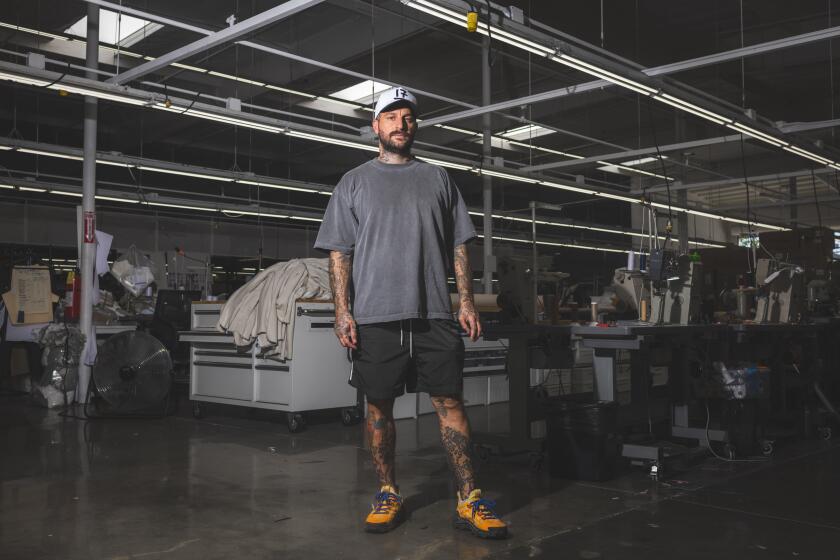‘Lawsuit Barbie’ Fails for Mattel
Although it was titled “Food Chain Barbie,” the photographic series by Utah artist Tom Forsythe was not exactly appetizing: “Malted Barbie” featured a nude Barbie in a blender. “Fondue a la Barbie” depicted Barbie heads in a fondue pot. “Barbie Enchiladas” showed several Barbie dolls swaddled in tortillas and roasting in an oven.
Mattel, the company that has been making Barbie for 45 years, was, not surprisingly, displeased by these images and promptly sued, arguing that the public would mistake these exaggerated and suggestive images for authentic Mattel products, thus diluting or diminishing the commercial value of their property.
But last week, artists everywhere had reason to celebrate when the U.S. 9th Circuit Court of Appeals ruled against Mattel, saying that Forsythe’s photographs were parodies of the iconic plastic doll and contained messages about gender roles and consumerism. As such, the photographs were legitimate free speech and did not infringe on Mattel’s copyright or trademark rights.
The decision is important because overaggressive enforcement of intellectual property rights is destructive to the free exchange of ideas in a democracy.
The rights of toymakers and others to profit from their original work must of course be protected. But at the same time, courts must, as the 9th Circuit did here, balance legitimate property rights against constitutional rights of free expression.
The tension between these rights is not new. Historically, the 1st Amendment has been used to ensure that particular venues remain open to free expression -- venues such as public squares, broadcast channels, books, newspapers and, most recently, cyberspace. Intellectual property law, by contrast, is concerned with safeguarding an owner’s property rights and with limiting the unregulated taking of copyrighted and trademarked properties.
Copyright infringement occurs when a creative work is copied or used without permission. Trademarks protect commercial products or services, and infringement occurs when a trademark is used without permission and causes a likelihood of confusion between the trademarked product and the unauthorized one.
But there is such a thing as “fair use,” which permits a user to take copyrighted or trademarked materials where the use is in the public interest.
The fair-use doctrine recognizes that new works draw inspiration from older works and that productive use of older works promotes the progress of science, the arts and literature.
The Copyright Act identifies these uses as criticism, comment, news reporting, teaching, scholarship and research. Courts have recognized other uses, such as parody, free speech, free expression and the public good. For example, quoting portions of books or letters, copying images for study purposes or running copyrighted footage on the evening news would all be considered fair.
The law identifies a four-factor analysis to aid in determining what constitutes fair use: the purpose and character of the use; the nature of the underlying work; the amount taken; and the potential market effect. Thus, the U.S. Supreme Court upheld the rap group 2 Live Crew’s parody of Roy Orbison’s “Oh, Pretty Woman” because the audience was different, the new song transformed the old with new meaning, and the market effect was determined to be nil.
By applying these factors, the 9th Circuit determined that the “Food Chain Barbie” series was a legitimate parody. Forsythe transformed the meaning and intent of the Barbie doll into new and different work, and consumers were not likely to confuse a naked Barbie in a blender with an authorized Mattel product.
The 9th Circuit decision is one in a string of cases that have been decided against the toymaker. For example, last January, the U.S. Supreme Court upheld the right of the Danish band Aqua to distribute its 1997 song “Barbie Girl,” whose lyrics refer to a “blond, bimbo girl.”
But the company persisted in using the law to intimidate artists. Forsythe’s legal fees (which may now be reimbursed) were in the millions of dollars. The chilling effect of monetary considerations cannot be underestimated.
The court also chastised Mattel for filing abusive discovery demands against two museums whose curators dared to testify on behalf of the artist.
Possibly Mattel is so aggressive in marking its territory because it believes that the product must be saved from all unauthorized activity that might dilute its uniqueness. Yet it is common sense that a corporate citizen need not cudgel every trespasser to avoid risking loss of intellectual property rights.
In the commercial marketplace and the marketplace of ideas, property rights are balanced against free expression rights. It is time to play fair in the Barbie Dreamhouse.
More to Read
Inside the business of entertainment
The Wide Shot brings you news, analysis and insights on everything from streaming wars to production — and what it all means for the future.
You may occasionally receive promotional content from the Los Angeles Times.










